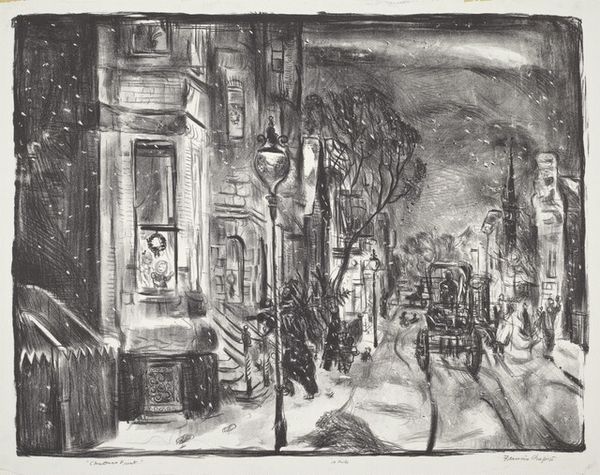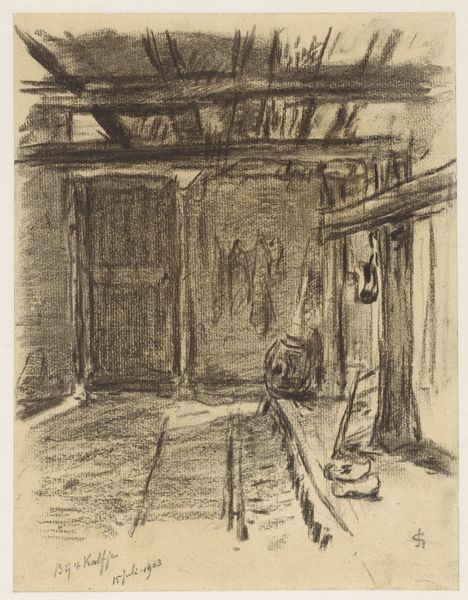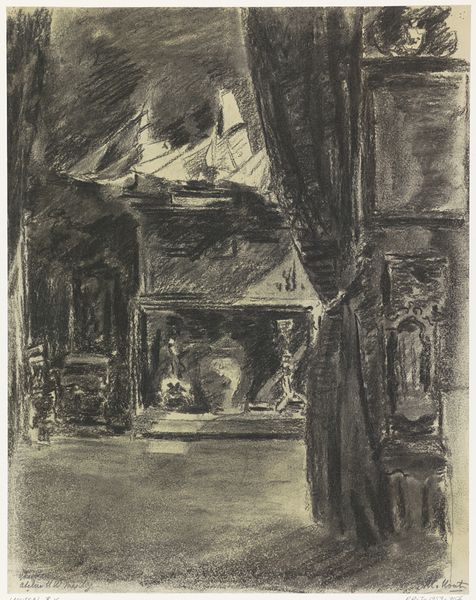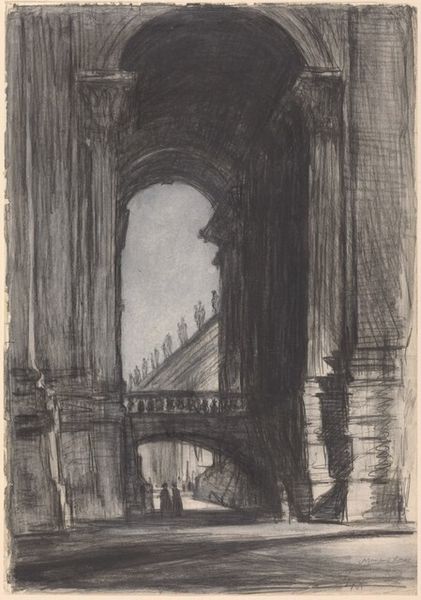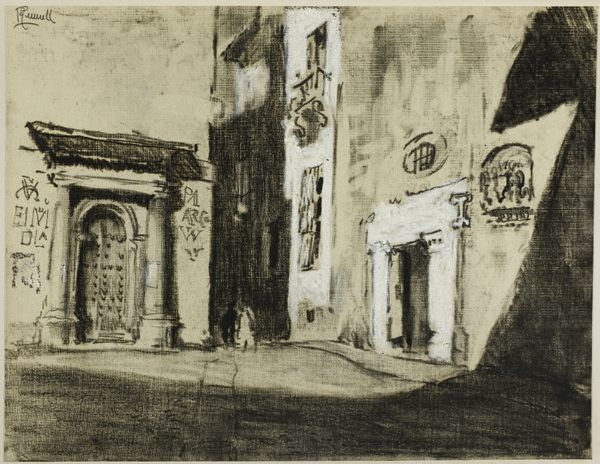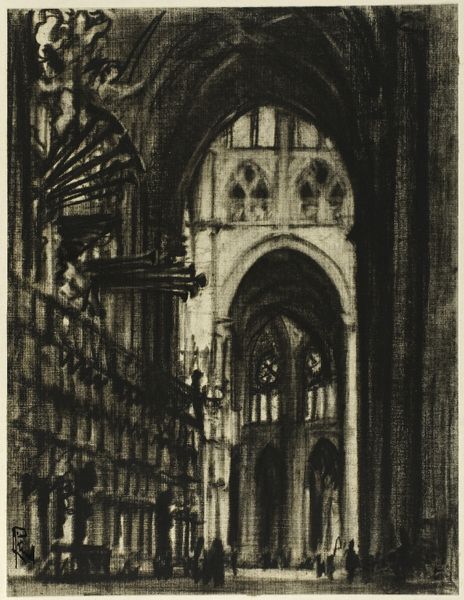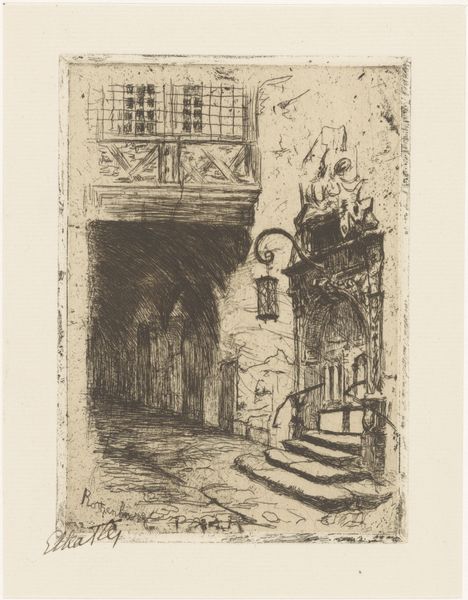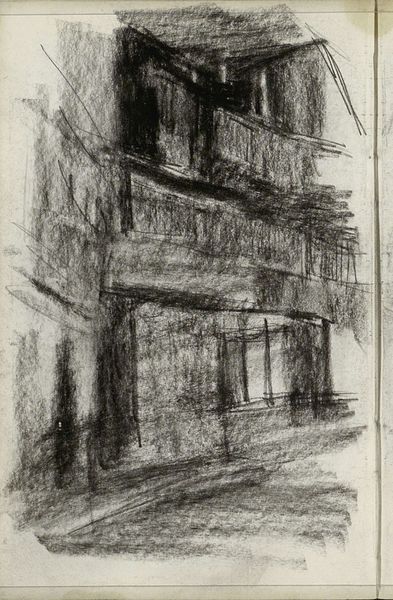
drawing, print, paper, chalk, charcoal
#
drawing
# print
#
landscape
#
charcoal drawing
#
paper
#
chalk
#
cityscape
#
charcoal
Dimensions: 255 × 192 mm
Copyright: Public Domain
Editor: Here we have Joseph Pennell’s “The Long Gallery, Prado,” a charcoal and chalk drawing from around 1903. I'm struck by how the strong perspective almost exaggerates the gallery’s length, making it feel endless. What do you see in this piece? Curator: I see a critique of the museum space itself. Pennell, known for his impressions of architecture and industry, here captures the Prado not as a space of enlightenment, but as a kind of isolating void. Notice how the figures are dwarfed and almost faceless. Editor: Faceless, yes! Almost ghostly. Do you think that anonymity is intentional? Curator: Absolutely. Consider the social context: early 20th century, massive social changes, anxieties about modernity and the individual's place within a rapidly changing world. Pennell isn’t simply depicting the Prado; he's commenting on the power structures embedded within cultural institutions. Who has access? Whose stories are told? The architecture overwhelms the individual. Are we meant to feel alienated? Editor: That’s a fascinating way to look at it. It really shifts my understanding of the drawing from a simple architectural study to a social commentary. Are the artworks on the walls less important than the commentary of the space itself? Curator: I think Pennell wants us to ask ourselves exactly that question. Are we focusing too much on the art and not enough on the social dynamics and hierarchies that dictate how we experience that art? Museums are not neutral spaces, but sites of power and negotiation. Pennell pushes us to see that. Editor: I hadn’t considered the museum itself as part of the message. I’ll definitely view this differently now, thinking about access and power when I see this drawing. Curator: Precisely. Art like this asks us to question the assumed neutrality of these spaces and to think critically about whose voices are amplified and whose are silenced.
Comments
No comments
Be the first to comment and join the conversation on the ultimate creative platform.
